Constructed Wetlands for combined sewer overflows (CSOs)
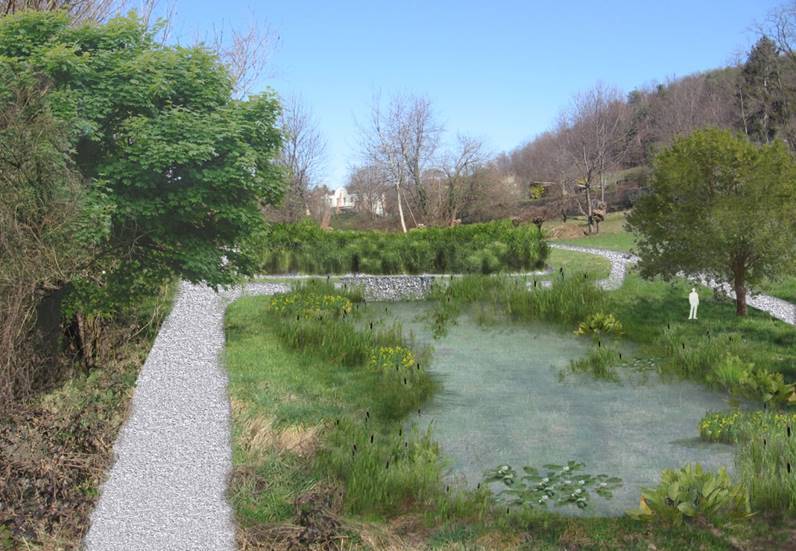
Nature-based solutions such as constructed wetlands fit very well with the aim of combined sewer overflow (CSO) treatment. Indeed, constructed wetlands treat CSOs in situ, avoiding the use of first flush tanks, which request to pump the entrapped CSO event again into the sewer at the end of the rainfall. Moreover, constructed wetlands for CSO treatment can be multi objectives, exploiting different ecosystem services such as flood mitigation, biodiversity increase or fruition.
CSO - Combined sewr overflow - IRIDRA's solutions
Classical constructed wetlands
- Constructed wetlands with vertical subsurface flow (VF)
- Constructed wetlands with free water surface (FWS)
- Hybrid constructed wetlands (VF + FWS)
Intensified constructed wetlands (Constructed wetlands 2.0)
- Aerated constructed wetlands (FBA™)
Additional integrated solutions
- Combination with additional ecosystem services
- Combination with landscaping solutions for water, green, and cities
- Combination with river restoration solutions
Combined sewer collect both wastewater and stormwater intercepted by waterproof surfaces that are present in urban areas (roads, squares, roofs). During storms great quantities of rainwater flow in the sewage system: only a part of them is collected to the treatment plants, due to the fact that they are designed for average hydraulic loads; through apposite floodways placed along the drainage net, excess flows are diverted and ( most of the times) directly discharged into the environment.
To ensure the respect of the quality of the receiving body, it is necessary to avoid that these discharges come to be unacceptable pollution sources: water collected by a combined sewer, in fact, contains pollutants of civil and industrial wastewater and, at the same time, contains pollutants coming from runoff on urban surfaces.
Along with strategies for the reduction of overflow volumes (among all the realization of separate sewage systems for wastewater and stormwater), the mitigation of environmental impacts is achieved through the treatment of overflows before they are discharged. Among different solutions, natural techniques as constructed wetlands are recognized at the international level as Best Management Practices for this problem: the achievement of appropriate purification goals, in fact, comes with cheap realization and easy management.
Concerning the design of constructed wetlands (CWs) for the treatment of combined sewer overflow, many experiences are known in the world (USA, Australia, Canada, Germany, England) showing positive results. Except for some differences due to particular characteristics of combined sewer overflow (variability and unpredictability of flows, lower concentrations fo pollutants respect to civil wastewater), constructed wetlands used in the treatment of overflows are similar to those used in the treatment of civil wastewater: systems are divided into Free Water Systems and Subsurface Flow Systems.
In general, a constructed wetland for the treatment of a combined sewer overflow is able to strongly reduce suspended solids and pollutants and to increase hydraulic safety through detention and peak flow cutting.
Esperienza IRIDRA
Commissioned by the Autorità di Bacino del Fiume Po (agency for the control of the river Po), our society is the leader of a workgroup for the feasibility study of the application of natural purification systems for the treatment fo combined sewer overflow in the Lambro-Seveso-Olona basin. This study leads to the design of several nature-based solutions for combined sewer overflow in Lombardia Region, both in line with the sewer (Gorla Maggiore, Villaguardia, Capiago Intimiano) and upstream big centralized WWTPs (Merone, Carimate).
The CSO-CW of Gorla Maggiore was sited in the new Gorla Maggiore "Water Park" and was monitored as a case study of the European funded project OpenNESS. The results showed the benefits of the multiple ecosystem services of the green infrastructure in comparison to the effect of conventional grey one (first flush tank plus a dry detention basin) (Masi et al., 2016; Liquete et al., 2016):
higher water quality improvement;
same flood mitigation;
higher support to biodiversity increase;
social benefits linked to the new park.
The other CSO-CWs (Villaguardia, Capiago Intimiano, Carimate, and Merone) will be monitored, in order to confirm the capability of nature-based solutions for the mitigation of combined sewer overflow environmental impact.
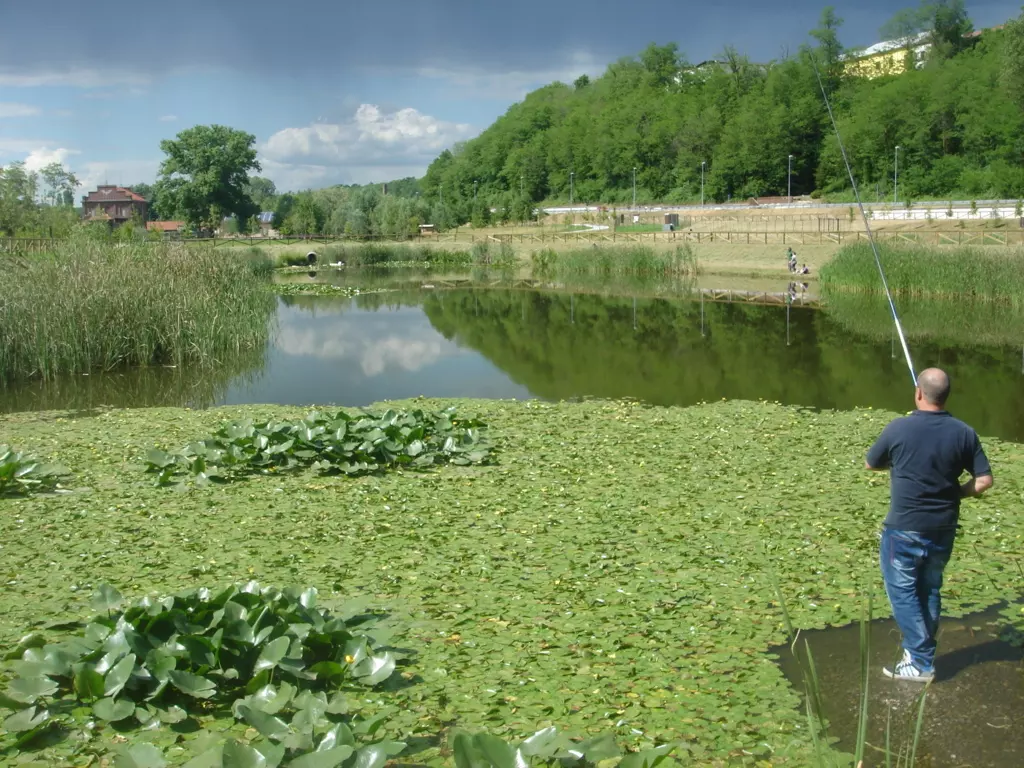
Constructed wetland for the treatment of combined sewer overflow of Gorla Maggiore (VA - Italy). The wetland was designed a multipurpose, exploiting different ecosystem services in the new "Water Park" of Gorla Maggiore: water quality improvement of Olona river, flood mitigation, public recreational area, and biodiversity increase. The "Water Park" of Gorla Maggiore was one of the case studies of the EU OpenNESS project.
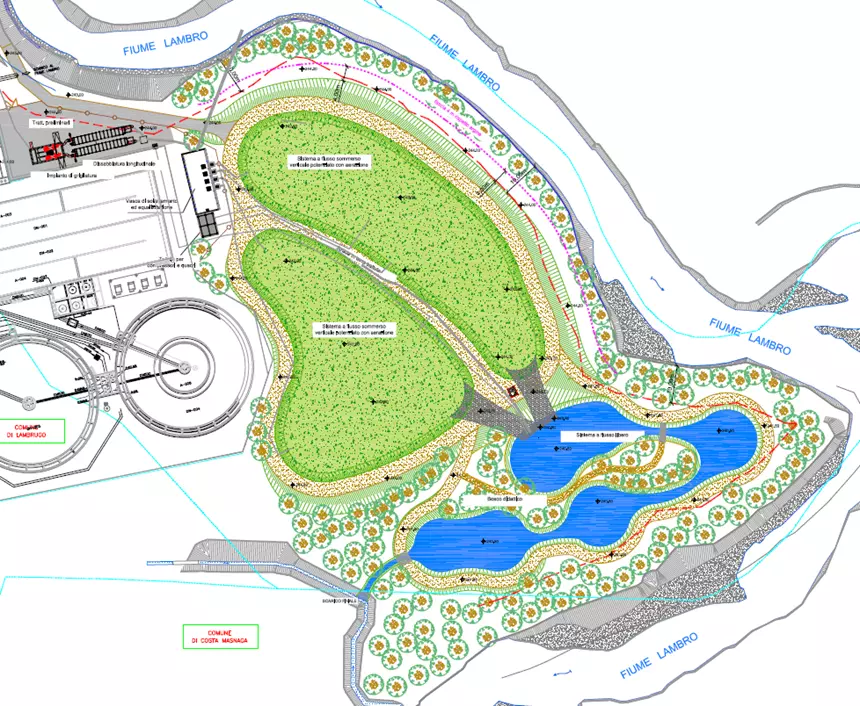
Aerated wetland for the treatment of combined sewer overflow upstream the WWTP of Merone (CO - Italy), 120.000 PE, designed by IRIDRA
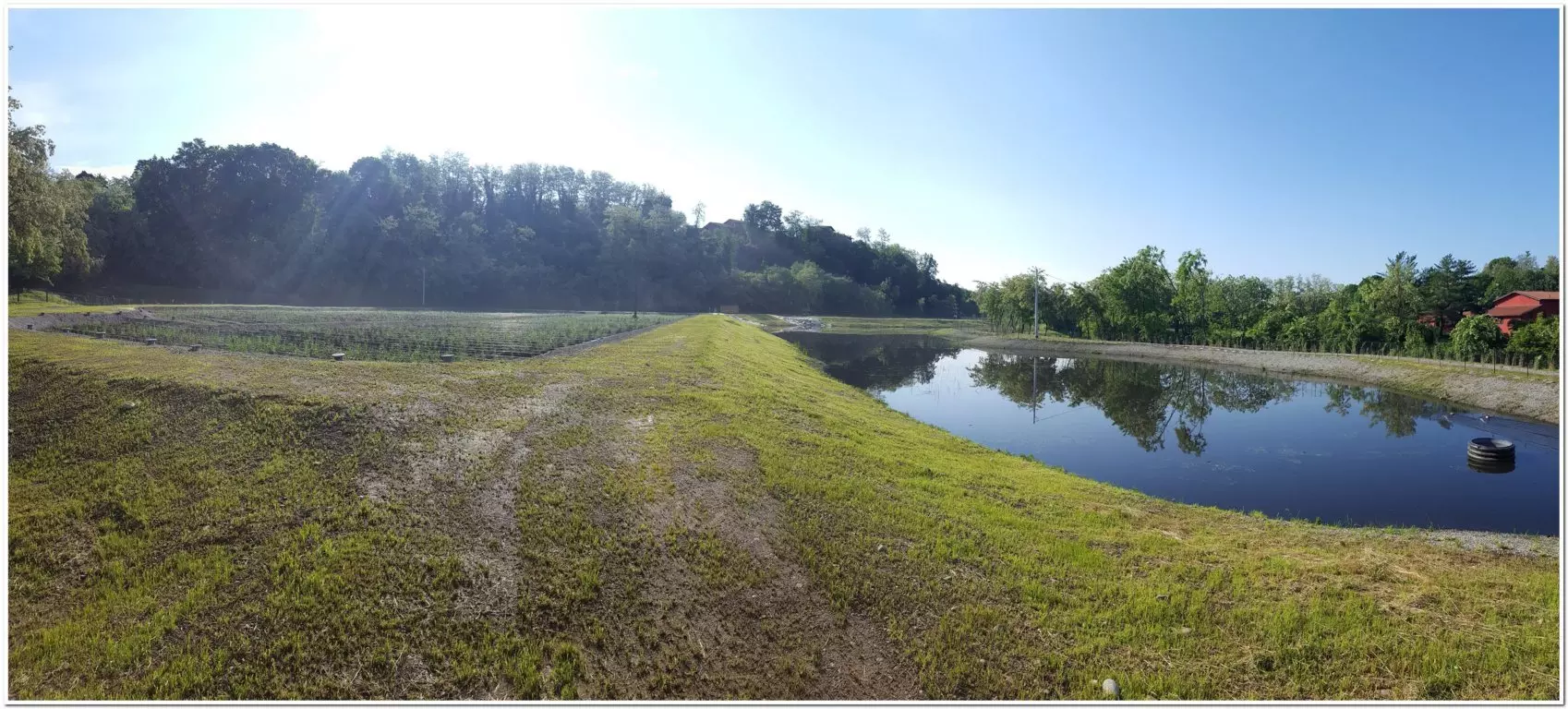
Constructed wetland for the treatment of combined sewer overflow upstream the WWTP of Carimate (CO), 70.000 A.E., designed by IRIDRA
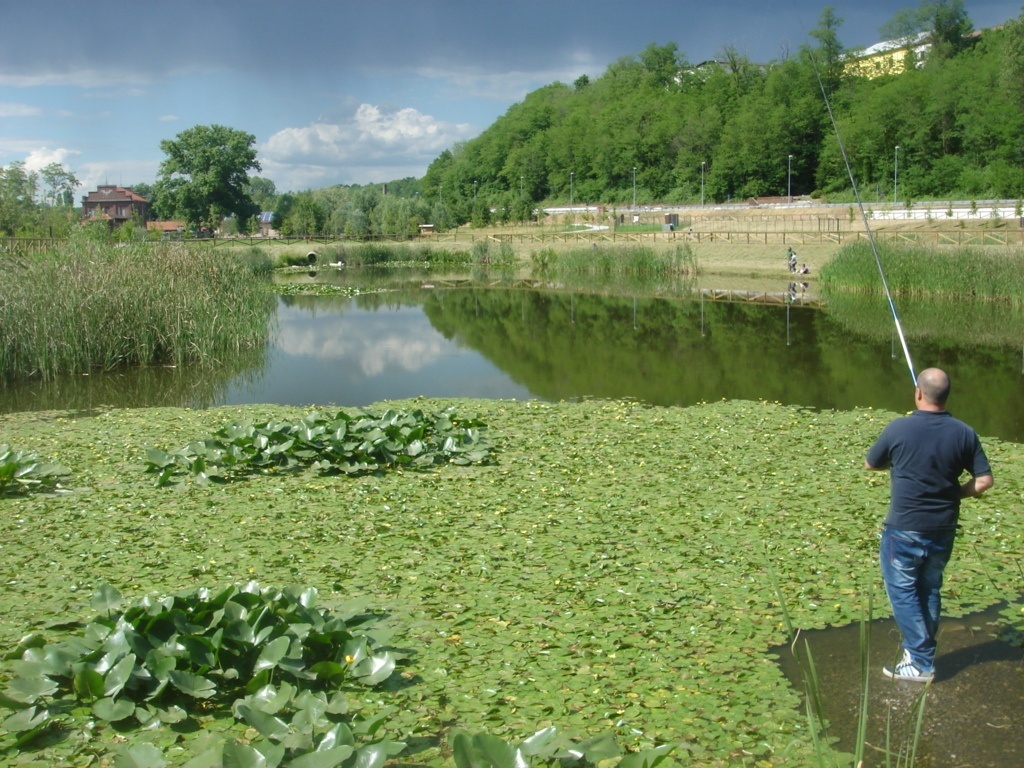
Combined sewer overflow of Gorla Maggiore (VA - Italy): The "Water Park"
Yearly treated volumes of first flush : 150.000 m3/year
Chosen Nature-based solution : VF + FWS
Peculiarity : Multipurpose nature-based solution integrating different ecosystem services within the new "Water Park" of Gorla Maggiore: water quality improvement of Olona river, flood mitigation, recreational site, and biodiversity increase. Case study of EU funded project OpenNESS.
Year of realization : 2012
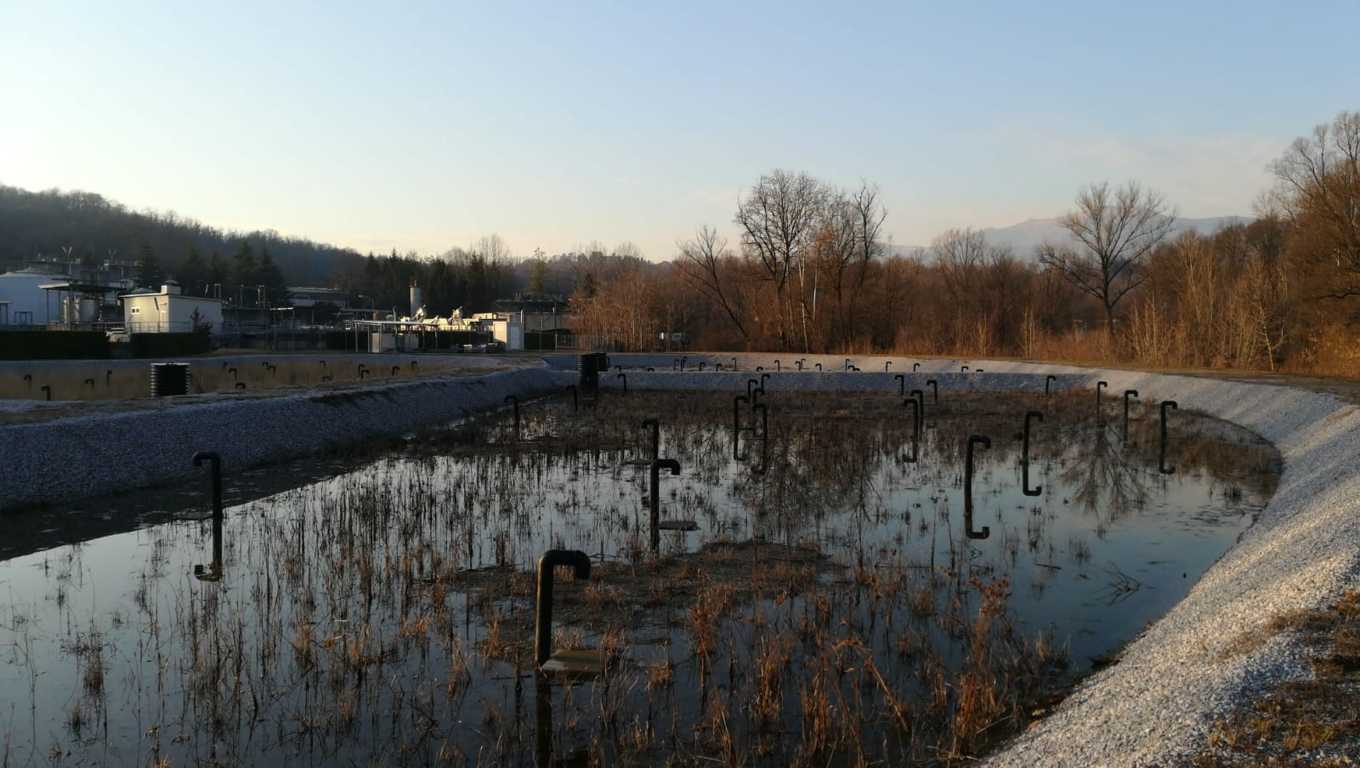
Combined sewer overflow upstream the WWTP of Merone (CO - Italy)
Yearly treated volumes of CSOs : 564.000 m3/year
Chosen Nature-based solution : FBA™ + FWS
Peculiarity : First aerated constructed wetland for CSO treatment in Italy, and among the first in the World
Year of design : 2015
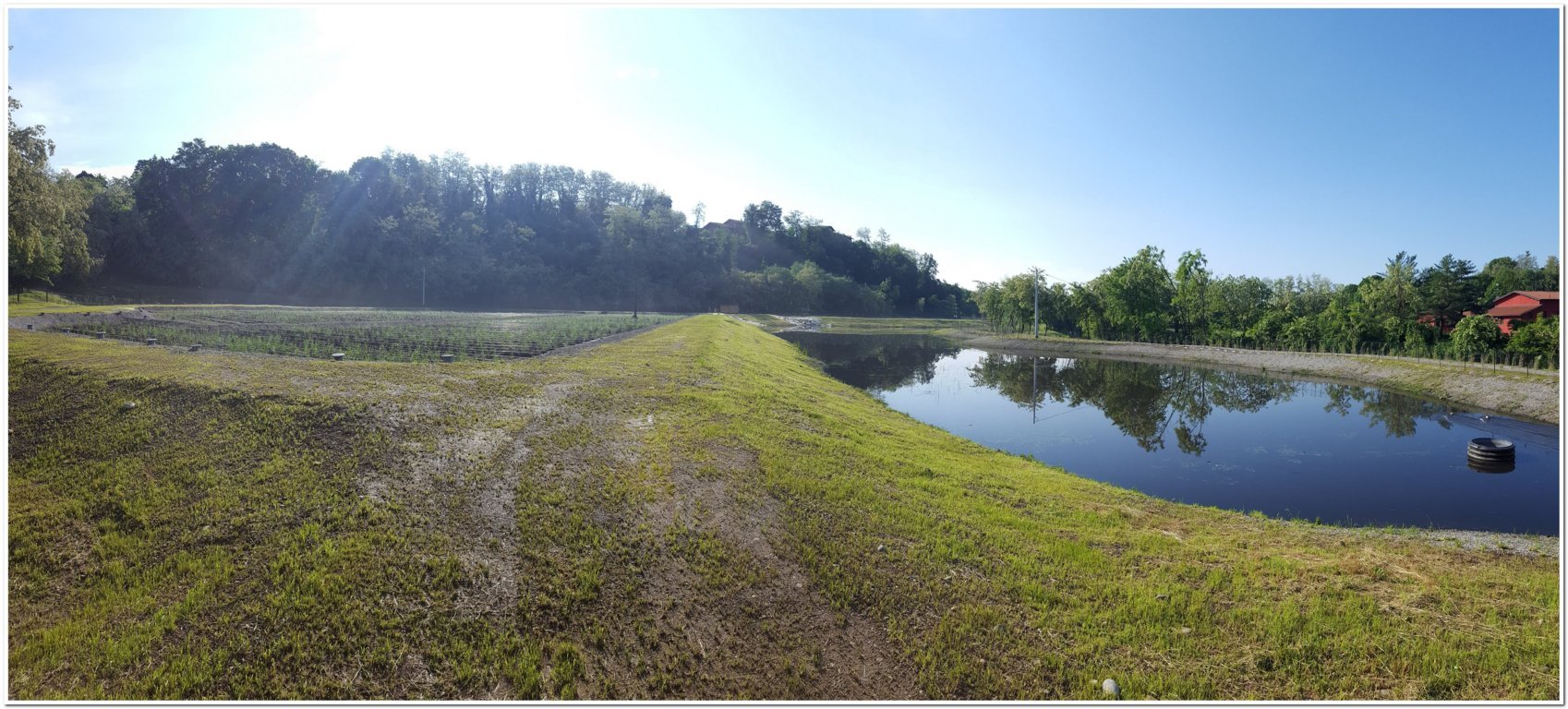
Combined sewer overflow upstream the WWTP of Carimate (CO - Italy)
Yearly treated volumes of CSOs : 515.000 m3/year
Chosen Nature-based solution : VF + FWS
Peculiarity : Nature-based solution integrating also intervention for environmental education and river restoration. Particularly, the project implements a restored riparian zone of Seveso river and a didactic wood area
Year of design : 2015
The CSO-CW is a two-stage system. The first stage comprises two VF CW beds, each one further divided into 2 separated hydraulic sectors for a total area of 8500 m2. The second stage is a free water surface (FWS) CW of 4500 m2. The system is fed by a pumping system and automatically regulated by a PLC to properly treat the first more polluted fraction of the CSO events.
The CSO-CW is able to intercept up to 500.000 m3/year (about 58% of the total estimated average CSO volume per year) and a COD load of 60 tCOD/year (about 60% of the total estimated CSO COD load per year). In other words, the CSO-CW is planned to intercept a pollutant load of 7700 p.e. (expressed in terms of COD), which were previously discharged untreated in the Seveso River.
The maximum exploitation of CW ecosystem services is planned thanks to the FWS stage, which also aims to increase biodiversity and to recreate an area suitable for environmental educational activities. The riparian area along the left side of the Seveso river is planned to be involved in river restoration activities, with plantation of vegetation more suitable for riparian environments.
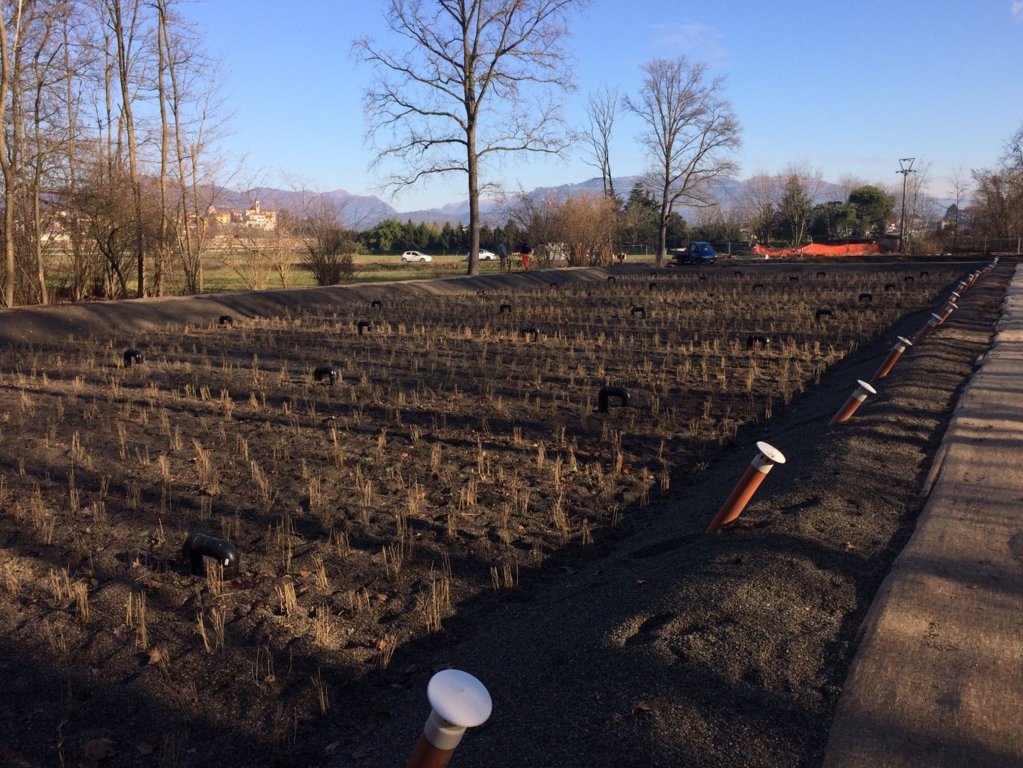
Combined sewer overflow of Villaguardia (CO - Italy)
Treated first flush flow rate : Up to 140 l/s
Chosen Nature-based solution : VF + FWS
Peculiarity : Multipurpose nature-based solution integrating different ecosystem services: water quality improvement, recreational site, and biodiversity increase.
Year of design : 2015
Constructed Wetland for CSO in Villa Guardia, Northern Italy
The intervention is one of the several CW system provided by Lombardia Region with the aims to reduce the environmental impact of Combined Sewer Overflows through the use of Constructed Wetland Technology designed with a multi-target approach, considering not only the water quality aspects but also the hydraulic protection, the biodiversity improvement and the educational opportunities. A real Ecosystem Service! The works started in March 2016
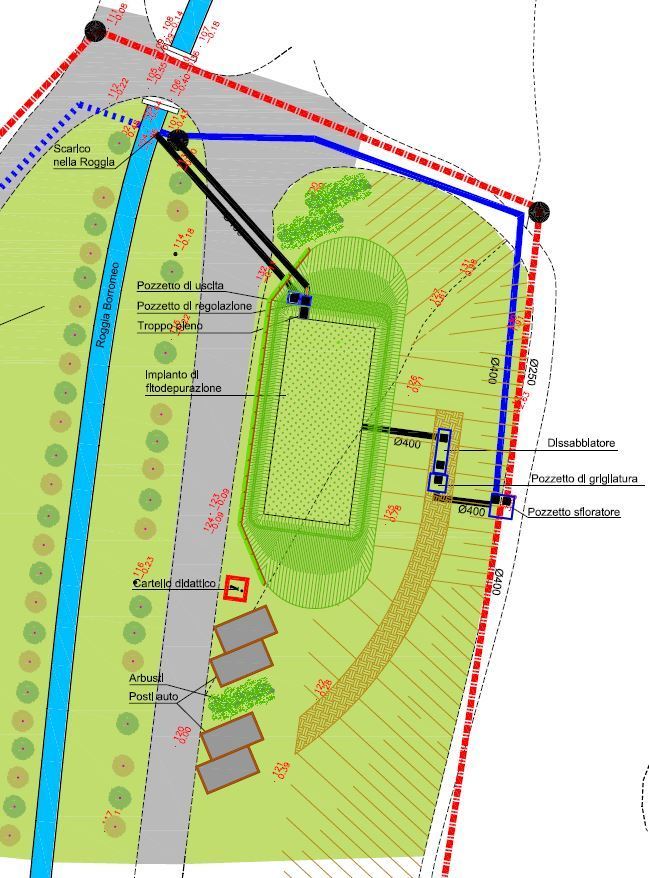
Combined sewer overflow of Carugo (CO - Italy)
Treated first flush flow rate : Up to 40 l/s
Chosen Nature-based solution : VF
Year of design : 2016
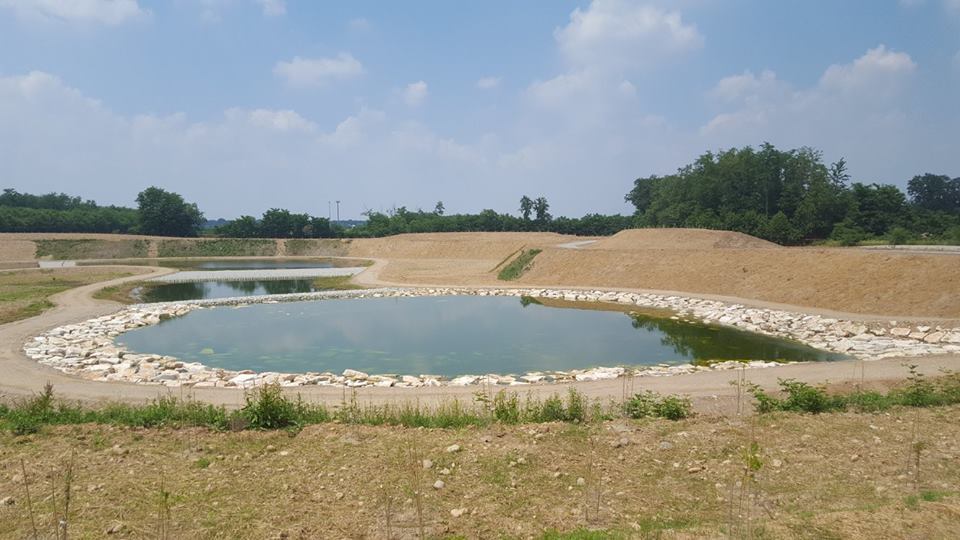
Combined sewer overflow of Mozzate (CO - Italy)
Treated first flush flow rate : Volumes higher than the 2050 m3 captured by the first flush tank
Chosen Nature-based solution : FWS
Peculiarity : Multipurpose nature-based solution integrating different ecosystem services: water quality improvement of second flushes, flood mitigation, recreational site (bicycle lane, birdwatching), and biodiversity increase.
Year of realization : 2016

Combined sewer overflow of Capiago Intimiano (CO - Italy)
Treated volumes of CSOs : up to 130 m3 per CSO event
Chosen Nature-based solution : VF + FWS
Peculiarity : Multipurpose nature-based solution integrating different ecosystem services: water quality improvement, flood mitigation, recreational site, and biodiversity increase.
Year of design : 2016
Configurazione: VF + FWS
Peculiarità
Intervento multiobiettivo che integra diversi servizi ecosistemici (ecosystem services): riduzione carico inquinante, laminazione per riduzione rischio allagamenti a valle, area ricreativa, aumento della biodiversità.
IRIDRA ha svolto la progettazione (preliminare, definitiva ed esecutiva) e la direzione lavori.
First flush volume treated: max 130 mc per CSO event
Scheme: VF + FWS
Characteristics
Multiobjective wetland for the exploitation of different ecosystem services: water quality, flood mitigation, increase of biodiversity and recreational activities
IRIDRA has done the design and the work supervision.

Combined sewer overflow upstream the WWTP of Mariano Comense (CO - Italy)
Yearly treated volumes of CSOs : 10.000 m3/year Chosen Nature-based solution FBA™ + FWS
Peculiarity : Pilot plant to optimise aerated wetland for combined sewer overflow treatment.
Year of realization :
2020

